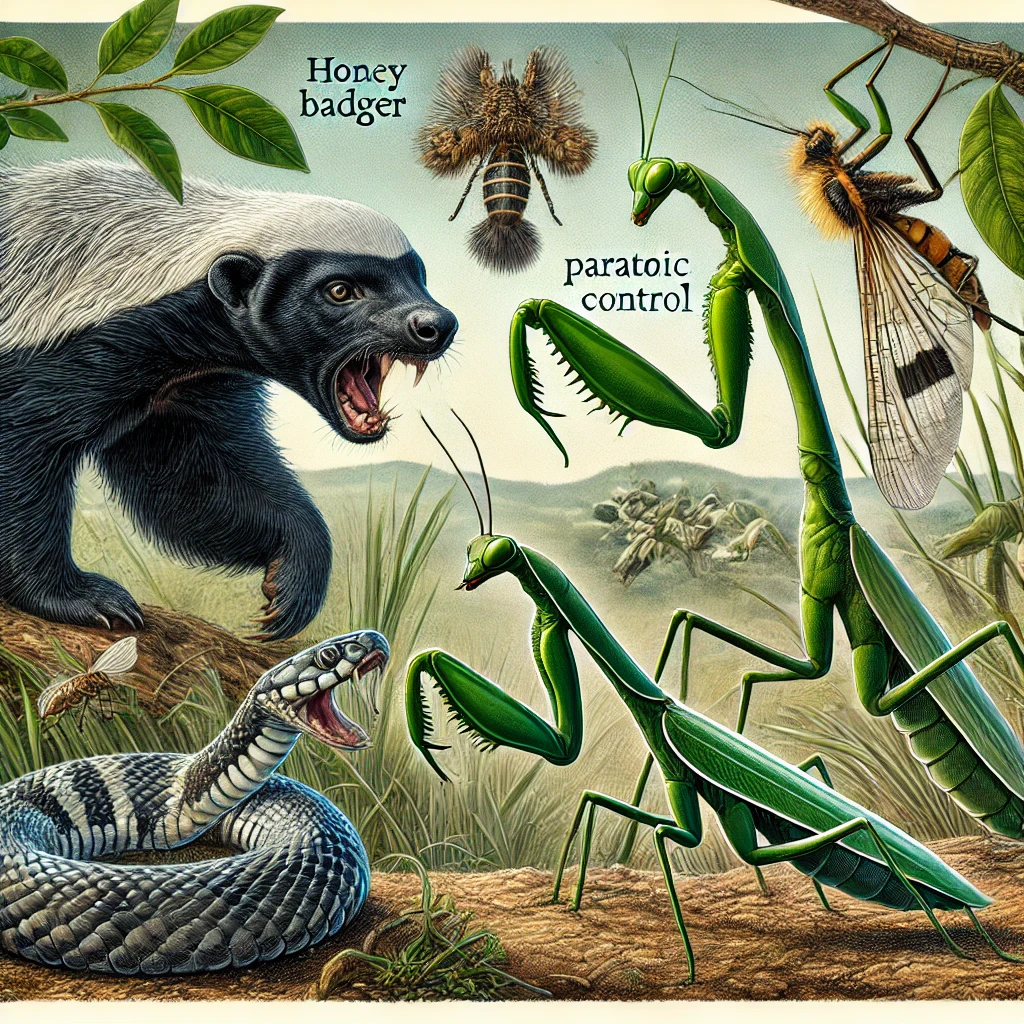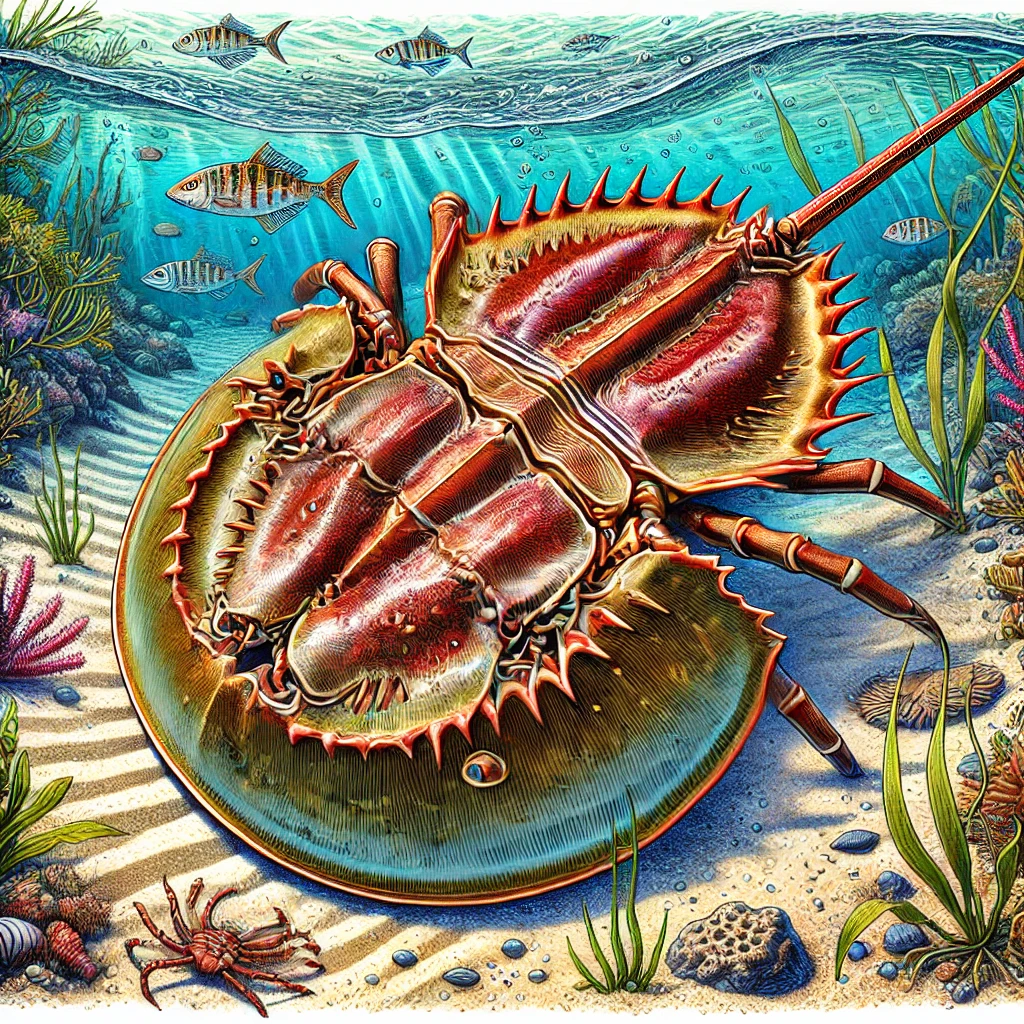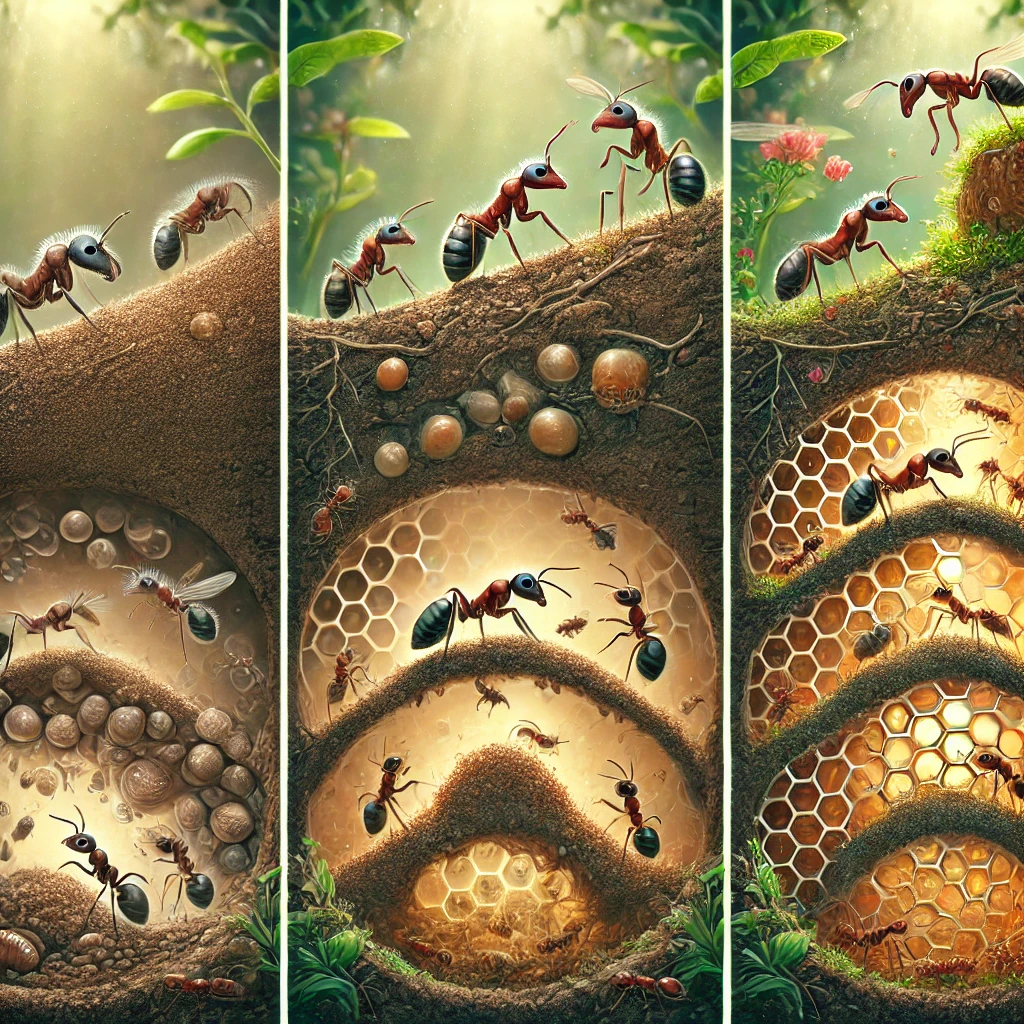In the vast and diverse animal kingdom, two creatures stand out for their remarkable fearlessness: honey badgers and mantises. Both are formidable in their own right, with unique survival strategies and behaviors that make them fascinating subjects of study. Today, we’ll delve into what makes these animals so fearless, and explore the one thing that even mantises fear: the hair worm.
The Indomitable Honey Badger
Honey badgers, also known as ratels, have earned a reputation for their fearless nature. Found in Africa, Southwest Asia, and the Indian subcontinent, these small but ferocious mammals are not afraid of anything. They have been known to take on animals much larger than themselves, including lions and hyenas. Their thick skin and loose fur make them difficult to bite or injure, and they possess powerful jaws and sharp claws that can deliver a formidable counterattack.
One of the most astonishing aspects of the honey badger’s fearlessness is its willingness to confront venomous snakes. Honey badgers frequently hunt and eat snakes, including highly venomous species like cobras. Even if bitten, the honey badger has a remarkable resistance to venom, often recovering quickly from bites that would be lethal to other animals.
The Fearsome Mantis
Mantises, particularly the praying mantis, are another group of animals known for their fearlessness. These predatory insects are masters of camouflage and ambush, waiting patiently for their prey before striking with lightning speed. Their forelegs are adapted for capturing and holding prey, equipped with sharp spines that ensure their victims cannot escape.
However, while mantises are fearsome hunters, male mantises have a reason to be afraid during mating season. After mating, it is not uncommon for the female mantis to decapitate the male. This seemingly brutal behavior is thought to provide the female with additional nutrients necessary for egg production, though it does not happen in all cases.
The Hair Worm: A Parasite to Fear
Despite their fearlessness, there is one thing that mantises universally fear: the hair worm. This parasitic organism is a nematomorph, a type of worm that infects various insects, including mantises. The hair worm’s life cycle and method of parasitism are both fascinating and terrifying.
Hair worms begin their life as larvae in water. When an insect drinks contaminated water or consumes a host that harbors the larvae, the hair worm enters the insect’s body. Once inside, the hair worm begins to grow, feeding on the host’s internal tissues. As it matures, it releases chemicals that manipulate the host’s behavior, effectively taking control of its mind.
Neuroparasitology: The Science of Mind Control
The study of how parasites like the hair worm control their hosts has given rise to a new field of science called neuroparasitology. This branch of science investigates the mechanisms parasites use to alter their hosts’ behavior. In the case of the hair worm, the parasite secretes substances that influence the nervous system of the infected insect, compelling it to seek out water.
When the hair worm is ready to complete its life cycle, it drives the infected mantis to water, often a stream or pond. Once near the water, the mantis will enter the water, allowing the hair worm to emerge from its body. The mantis, now free of the parasite, may escape the water if it is fortunate enough to avoid aquatic predators.
The Impact on Other Insects
The hair worm does not exclusively target mantises. It can infect a variety of insects, including crickets and grasshoppers. Regardless of the host, the parasite employs the same strategy: manipulating the host to seek out water, where the mature worm can then exit and continue its life cycle.
Interestingly, some insects can survive the presence of the parasite or even multiple parasites. The ability to endure such an invasive presence varies among species and individual insects.
How to Rid of the Hair Worm
For insects infected by the hair worm, water is both a curse and a potential cure. By entering water, the host allows the parasite to leave its body. If the insect survives the process, it can return to its normal life, free of the parasitic burden.
Conclusion
The honey badger and the mantis exemplify fearlessness in the animal kingdom, each in their own unique way. The honey badger’s boldness in the face of danger and the mantis’s predatory prowess make them fascinating creatures to observe and study. However, the story of the hair worm adds a layer of complexity, revealing how even the most fearless animals can be vulnerable to parasitic control.
Understanding the interactions between parasites and their hosts not only sheds light on the intricacies of nature but also opens doors to scientific advancements in fields like neuroparasitology. By studying these relationships, we can gain insights into the broader principles of biology and the delicate balance of ecosystems.
So, the next time you marvel at the bravery of a honey badger or the hunting skills of a mantis, remember the tiny hair worm and its incredible, albeit sinister, influence. The natural world is full of surprises, with each creature playing a role in the intricate web of life.



